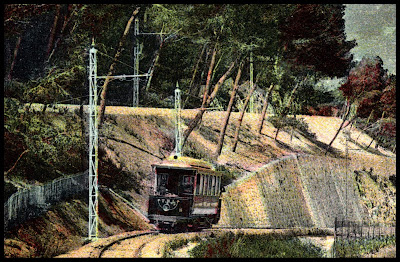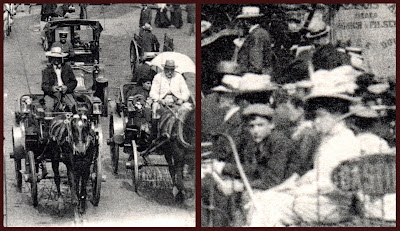
Urban and suburban visions from a century past. Vintage trams condemned forever by the constraints of the tramline embedded in the roadway, unable to swerve or change direction. Heavy coach-built superstructures that pitched and rolled through crowded city streets; the first mass transit systems of the Machine Age. Postcard details from Europe and North America remind us of the sometimes sinister air of poetry that attaches to these chariots especially when they escape the city and take to the outer suburban routes. Modernism was born in the Age of the Tram. For the Surrealists, the tram was a conveyor of dreams while George Grosz pictured trams as agents of destruction, screaming through the streets packed with the souls of the damned. It’s difficult to see these creatures as the ancestors of the sleek and streamlined vehicles that glide through the outer boulevards of Paris.







































